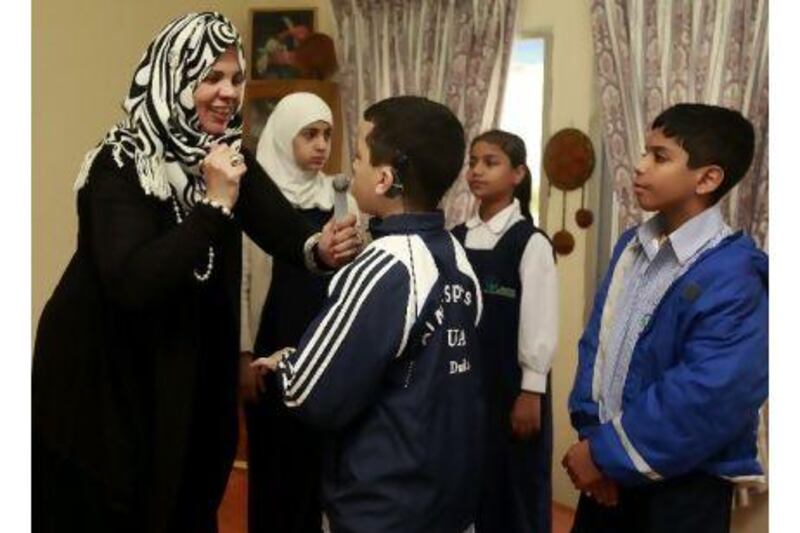SHARJAH // Alanoud Ibrahim and Reema Nitham are frantically waving their hands, engrossed in a conversation about a natural disaster.
The Grade 11 pupils at Al Amal School for the Deaf at the Sharjah City for Humanitarian Services can lip read and follow expressions. They can also express themselves using visual aids or by writing.
Mahmoud Ramadan, their classmate, joins in the debate as their sign language instructor supervises.
"For a long time, deaf people were thought to be stupid and not able enough to be a part of society," says Alanoud, an Emirati, with the help of Wael Samir, her instructor. "That is slowly changing, though in many instances we are still discriminated against."
The 78 pupils at Al Amal, which follows the Ministry of Education curriculum, are earning their high-school diplomas and have big ambitions for the future.
However, very few mainstream schools have the resources and therapists to help them to realise their goals. Without formal sign-language training courses, pupils who are deaf often pick up the language informally.
At Al Amal, teachers make greater use of visual aids than of auditory teaching, explains Afaaf al Haredi, the manager of the institute.
"We include things like drama and debate, and concentrate more on learning by doing," she says. "We also have technological aids like interactive boards and multimedia to teach them."
The school was established in 1979, starting out with 12 pupils at a British army camp in Al Yarmouk, Sharjah. In the beginning they borrowed the Kuwaiti syllabus, earning ministry accreditation in 1995.
"Many of our students wish to go on to university and our affiliation to the ministry allows them to do so," says Ms al Haredi.
The institute strives to integrate pupils into mainstream education where possible, having sent about 56 into private and public classrooms since 1990.
"Many of our students have also graduated from university and have jobs," she adds.
She plans to visit several US schools this spring, to learn how they integrate children with disabilities.
"When I return, I will share that experience with my peers and hope to give a presentation to schools on how they can adopt those practices."
aahmed@thenational.ae
Sign language breaks down communication barriers
Al Amal school at Sharjah City for Humanitarian Services is one of the few adequately resourced for the deaf.

Editor's picks
More from the national





